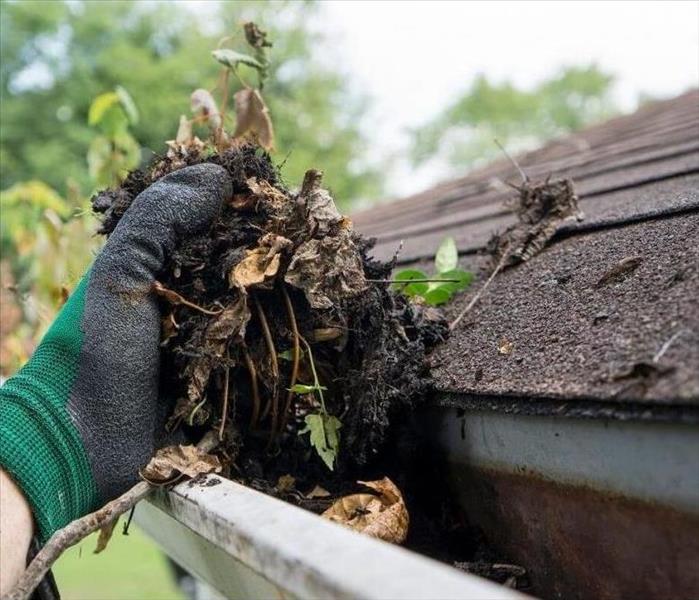Recent Posts
Is Your Fireplace Safe? Common Causes of Smoke Damage and How to Avoid Them
12/23/2024 (Permalink)
 Dealing with the Lingering Odor of Smoke and How SERVPRO of SYC Can Help
Dealing with the Lingering Odor of Smoke and How SERVPRO of SYC Can Help
As the winter frigid temps creep upon us, many of us are looking forward to cozy evenings by the fireplace. However, while a warm fire can create a welcoming atmosphere, it's vital to ensure it's functioning safely and efficiently. Unfortunately, improper fireplace maintenance can lead to smoke damage, which can not only spoil your relaxing vibe but also affect your home’s air quality.
Common Issues That Cause Smoke Damage
- Clogged Chimneys: Over time, creosote—a byproduct of burning wood—can build up along the interior of your chimney. This accumulation not only presents a fire hazard but can also impede proper airflow, causing smoke to enter your home instead of venting outside.
- Improperly Vented Fireplaces: Fireplaces need to be vented correctly to ensure smoke is channeled outside. If your venting system is poorly designed or has blockages, it can lead to smoke filling your living space rather than escaping safely.
- Burning Wet Wood: Burning firewood that hasn’t been properly seasoned (dried for six months to a year) can produce excessive smoke. Wet wood not only burns inefficiently but also releases pollutants into the air.
Practical Advice for Homeowners
To keep your fireplace functioning effectively and safely, consider the following tips:
- Regular Inspections: Schedule annual inspections with a certified chimney sweep to ensure your chimney is clean and free of blockages. This simple step can dramatically decrease your risk of smoke damage and fire hazards.
- Use Proper Fuel: Always burn seasoned wood. Not only does this produce less smoke, but it also enhances the overall heating efficiency of your fire. Look for wood that is split, stacked, and has been dried adequately.
- Check Your Ventilation: Make sure your fireplace is vented appropriately. If you experience smoke backdrafts, it may be time to consult a professional to evaluate your venting system.
- Install Carbon Monoxide Detectors: Since smoke isn’t the only concern, having carbon monoxide detectors installed can keep your family safe. These detectors will alert you to any danger, giving you peace of mind as you enjoy your fireside gatherings.
How SERVPRO of Southern York County Can Help
If you experience smoke damage, SERVPRO of Southern York County is here to help you reclaim your home. Our trained professionals specialize in soot and smoke remediation. We understand the complexities involved in smoke damage cleanup and have the tools needed to assess and restore your space effectively and quickly.
We take a thorough approach, addressing not only the visible residue but also taking steps to eliminate lingering odors. Our goal is to restore your home to its pre-damage condition, so you can focus on what really matters—enjoying your time with family and friends by a warm, safe fire.
Being proactive about fireplace maintenance can prevent many smoke-related issues. By ensuring proper ventilation, using dry wood, and scheduling regular inspections, you can keep your home safe and warm throughout the chilly months ahead. And remember, if smoke does get the better of your fireplace, SERVPRO of Southern York County has your back!
Stay safe and enjoy those cozy evenings!
For more information on our smoke damage restoration services, contact us today!
How Quickly Does Black Mold Spread from a Water Heater Leak?
11/11/2024 (Permalink)
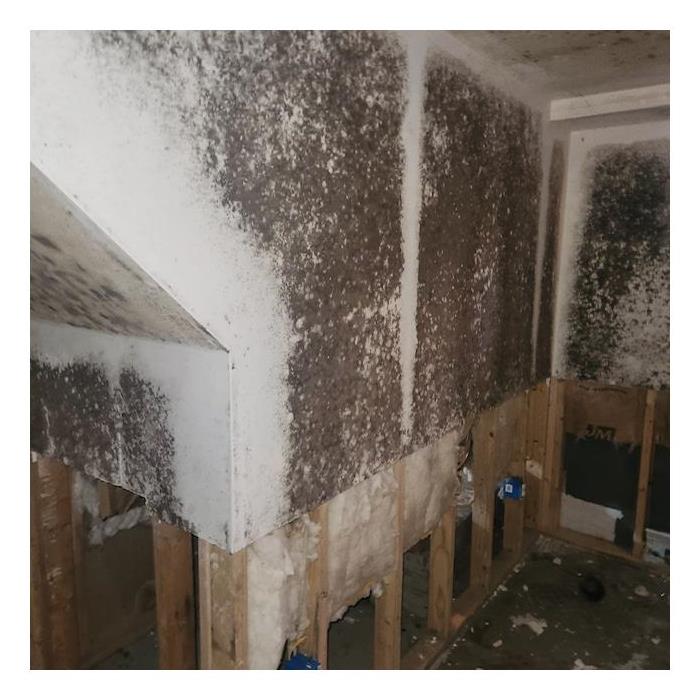 this is what less than 30 days after a water leak looks like when left untreated
this is what less than 30 days after a water leak looks like when left untreated
Water heater leaks are more than just an inconvenience—they can quickly escalate into a serious problem, particularly when it comes to the growth of black mold. Black mold, or *Stachybotrys chartarum*, thrives in damp, humid environments, making a leaking water heater the perfect breeding ground. But just how quickly can black mold spread in such a scenario? Let’s explore the factors at play and why prompt action is crucial to preventing further damage.
The Conditions That Favor Black Mold Growth
To understand how quickly black mold can spread from a water heater leak, it's important to recognize the conditions that mold needs to thrive:
- Moisture – Mold requires constant moisture to grow, which is why leaks, especially those from a water heater, are such a big concern.
- Warmth – Mold spores typically grow in warm temperatures, making areas near water heaters, which generate heat, ideal for mold growth.
- Organic Material – Mold feeds on organic materials like wood, drywall, insulation, and even dust. Most homes have plenty of surfaces mold can latch onto.
A water heater leak creates the perfect storm for mold to flourish. If left unchecked, this can lead to widespread contamination in just a matter of days.
How Quickly Can Black Mold Spread from a Water Heater Leak?
The timeline for black mold growth varies based on several factors, but mold can begin to form as quickly as 24 to 48 hours after a water leak. Here's why:
- Immediate Exposure to Moisture: As soon as water begins leaking from the heater, it spreads across floors and walls, creating a damp environment. If the leak goes unnoticed or isn't immediately addressed, mold spores that are naturally present in the air can start to colonize these damp surfaces.
- The 24-Hour Mark: Mold can start to develop in areas where water has pooled or where the humidity level is elevated. At this stage, you may not see visible mold growth, but the spores are likely beginning to establish themselves on organic surfaces (e.g., drywall, wooden beams, carpet padding).
- 48-72 Hours: In as little as two to three days, you might begin to notice early signs of mold growth, such as a musty odor or discoloration on surfaces. By now, the mold spores have begun to reproduce rapidly, especially in areas that remain consistently wet, like near the base of the water heater, under carpeting, or in walls behind the water heater.
- 1 Week or More: By the end of the first week, visible black mold may begin to appear. At this point, the mold has likely spread to other areas nearby, including hidden spaces like crawl spaces or walls where water has traveled, often unnoticed. If the leak continues, the growth of mold will worsen, and it could spread to a larger area of your home.
Factors That Affect Mold Growth Speed
While the general timeline above provides an overview, several factors influence how quickly mold will spread:
- Amount of Water Leaked: A small, slow leak might not create enough moisture to trigger immediate mold growth, but a large, fast leak—especially if it goes undetected for a while—can cause mold to spread much more quickly.
- Temperature and Humidity: Warmer, more humid environments speed up the mold growth process. If the water heater leak is in a warm basement or poorly ventilated area, mold could spread faster than it would in a dry, cool room.
- Material Type: Mold spreads faster on porous materials like wood, drywall, and carpeting. If your water heater is leaking in an area with these materials, you can expect mold to colonize faster than in areas with concrete or tile.
- Ventilation: Poor airflow will exacerbate the situation, as stagnant, humid air allows mold spores to settle and proliferate. Good ventilation can slow down mold growth, but if the area near the water heater is sealed off or has low air circulation, the mold will thrive.
Why Prompt Action is Essential
The key to preventing black mold from spreading too far is early intervention. The longer water from a leaking water heater is allowed to seep into building materials and remain damp, the more time black mold has to spread and cause damage. Once mold has taken hold, it can be difficult and expensive to remediate.
Steps to Prevent Mold from Spreading
- Address the Leak Immediately: The first step is to stop the water from leaking. Turn off the water supply to the heater and call a plumber to repair the issue. The quicker you fix the leak, the less chance there is for mold to form.
- Dry the Affected Area Thoroughly: Use fans, dehumidifiers, and towels to dry the wet areas as quickly as possible. Ideally, you should aim to dry the area within 24 to 48 hours to prevent mold growth.
- Inspect for Water Damage: Check the area around the water heater for signs of water damage, including discoloration, warping, or dampness in materials. If you find signs of mold growth, it’s crucial to address it immediately.
- Consider Professional Mold Remediation: If mold has already taken hold, you may need to hire a professional mold remediation service. These experts can assess the extent of the problem and safely remove mold from your home, preventing it from spreading further.
- Improve Ventilation: Once the immediate issue is resolved, consider improving ventilation in the area around your water heater. This can help prevent future moisture buildup and reduce the likelihood of mold growth.
A water heater leak may seem like a minor issue at first, but it can quickly escalate into a black mold problem. Mold can begin to spread within 24 to 48 hours, and once established, it can rapidly colonize your home, causing damage to structures and posing health risks to your family. The key to avoiding mold infestation is quick action: repair the leak, dry the affected areas, and monitor for any signs of mold. By addressing the issue early, you can prevent costly mold remediation and safeguard your home.
If you suspect you have mold growing from a water heater leak, don't wait. Take action today to protect your home and give us a call!
Say Goodbye to Persistent Odors
9/23/2024 (Permalink)
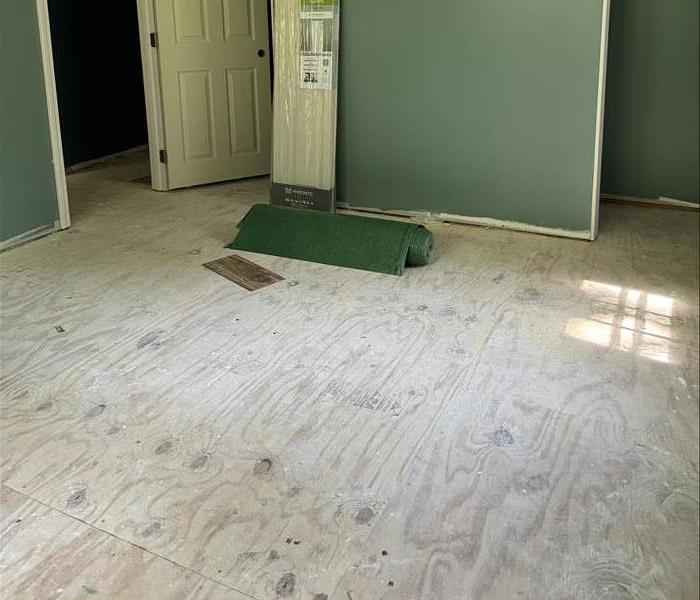 carpet removal & clean up
carpet removal & clean up
Removing stubborn odors from your home or business can feel like an uphill battle. Whether it’s the lingering scent of tobacco smoke, pet accidents, or even pest-related odors, trying to tackle these smells on your own can be both daunting and frustrating. Fortunately, SERVPRO® is Here to Help®. Our professional odor detection and removal services are designed to tackle even the most persistent smells, leaving your space fresh and welcoming.
Why Choose SERVPRO?
At SERVPRO, we understand that every odor problem is unique, which is why we take a tailored approach to odor removal. Our trained technicians utilize advanced techniques and state-of-the-art equipment to identify and eliminate odors at their source, ensuring a comprehensive solution.
Our Comprehensive Odor Removal Services
Here’s a closer look at what we offer:
- Home Odor Removal
Your home should be a sanctuary, not a source of discomfort. Whether it’s musty basements, food smells, or everyday odors, our home odor removal services will restore your living space to its original freshness.
- Business Odor Removal
First impressions matter. A pleasant atmosphere can make a world of difference in customer satisfaction. Our business odor removal services cater to various industries, ensuring your workplace is inviting and odor-free.
- Home and Office Deodorization
Whether it’s your home or your office, we provide comprehensive deodorization services. Our experts use eco-friendly products and techniques to neutralize odors, creating a healthier environment for everyone.
- Pet Odor Removal
Pets are part of the family, but they can also leave behind unpleasant smells. Our specialized pet odor removal techniques effectively eliminate urine, dander, and other pet-related odors, helping you enjoy your home without the lingering scents.
- Smoke Odor Removal
Tobacco smoke can cling to surfaces and linger in the air, creating an uncomfortable environment. Our smoke odor removal services are designed to eradicate these stubborn smells, restoring clean air to your space.
- Pest Odor Removal
Pests can leave behind unpleasant odors that are tough to remove. Our team is skilled in identifying and eliminating these smells, ensuring your home or business remains fresh and free of any unwelcome scents.
The SERVPRO Difference
When you choose SERVPRO, you’re choosing a team that prioritizes customer satisfaction. Our professionals are dedicated to providing effective odor removal solutions, backed by years of experience and training. We understand the science behind odor removal, which allows us to address the root cause rather than just masking the smell.
Ready to Breathe Easier?
Don’t let persistent odors ruin your comfort. Trust SERVPRO for all your odor detection and removal needs. Whether it’s for your home or business, our team is ready to restore freshness to your space. Contact us today to learn more about our services and schedule an appointment. Say goodbye to stubborn smells and hello to a cleaner, more inviting environment!
5 Steps to Navigate Your Fire Insurance Claim Process
8/31/2024 (Permalink)
 Don't overthink, let our team make the process easy and seamless
Don't overthink, let our team make the process easy and seamless
5 Steps to Navigate Your Fire Insurance Claim Process
Dealing with the aftermath of a fire can be overwhelming, and navigating the insurance claim process only adds to the stress. However, with the right approach, and the help of your team at SERVPRO Southern York County, homeowners can effectively handle their fire insurance claims. Here are five essential steps to help you through the process and ensure a smoother recovery.
- Report the Incident Promptly
As soon as the fire is extinguished and everyone is safe, one of the first crucial steps is to notify your insurance company about the incident. Reporting the fire promptly allows the insurance adjuster to assess the damage quickly and kick-start the claim process. Be sure to have your policy number and relevant details ready when making the call.
- Document the Damage
Comprehensively document all the damage caused by the fire. Take photographs and videos of the affected areas and items, and make a detailed inventory of the lost or damaged belongings. Keep all receipts for expenses related to temporary accommodations, meals, and any other fire-related costs. Thorough documentation strengthens your claim and helps in the evaluation of the compensation needed for recovery.
- Understand Your Policy
Familiarize yourself with the specifics of your fire insurance policy. Understand the coverage limits, deductibles, and any exclusions that may apply. Consider consulting with a professional if you need clarification on the policy terms, as this can greatly impact your claim process and the compensation you receive.
- Mitigate Further Damage
It's important to take steps to prevent additional damage to your property. This may include covering broken windows, securing the property, and making temporary repairs. Keep records of any expenses incurred in mitigating further damage, as these costs may be reimbursable under your policy.
- Work with the Insurance Adjuster
Cooperate fully with the insurance adjuster throughout the assessment process. Provide them with all the necessary documentation and information they require to evaluate your claim accurately. Be proactive in communicating with the adjuster, and ask questions about the claim process and any concerns you may have.
DID YOU KNOW:
Working with your SERVPRO® team to navigate the claims process is uncomplicated. Our experts can expedite and begin the process without requiring any upfront money. We collaborate with all insurance carriers and have established relationships with agents and adjusters.
By following these five steps, homeowners can navigate the fire insurance claim process more effectively and ensure a smoother recovery from the devastating impact of a fire.
Remember, in the event of a fire, the safety of yourself and your loved ones is the top priority. Once everyone is safe and the authorities have been notified, these steps can help in beginning the journey towards rebuilding and recovering from the fire's aftermath.
With the right approach and teaming up with SERVPRO Southern York County, homeowners can mitigate the challenges and secure the necessary support to restore their homes and lives.
Fire Safety Tips for Families with Back-to-School Routines
8/12/2024 (Permalink)
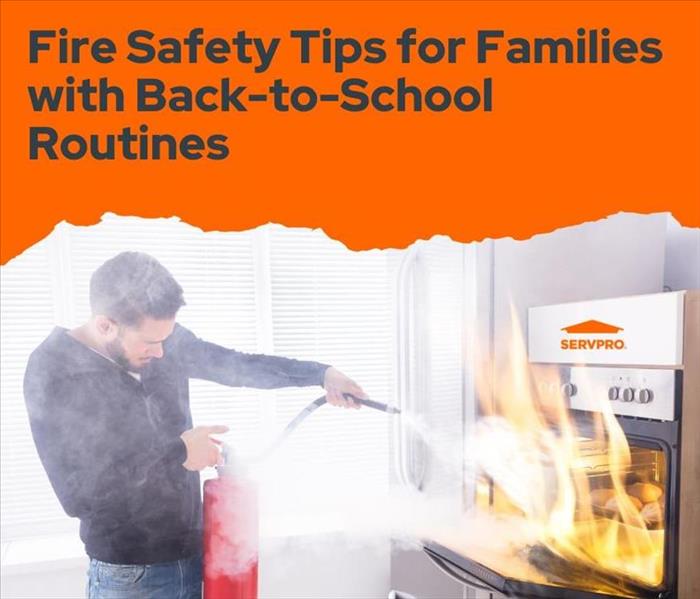 Fire Safety Tips for Families with Back-to-School Routines
Fire Safety Tips for Families with Back-to-School Routines
As families prepare to transition back into school routines, it’s essential to prioritize safety at home, especially when it comes to fire prevention. The start of the school year brings a shift in daily activities, and with that, it’s crucial to ensure that your family is well-prepared to prevent and respond to potential fire emergencies. Here are some essential fire safety tips to keep your loved ones safe.
1. Check and Maintain Smoke Alarms
Smoke alarms are your first line of defense in case of a fire. Before the school year kicks into full gear, take the time to check all the smoke alarms in your home. Replace the batteries if necessary and test each alarm to ensure it’s working properly. Remember, there should be a smoke alarm installed in every bedroom, outside each sleeping area, and on every level of your home.
2. Create a Fire Escape Plan
A well-thought-out fire escape plan is crucial for every household. Gather your family and discuss the best escape routes from each room in the house. Identify at least two ways out of each room, if possible, and designate a safe meeting spot outside the home where everyone should gather in the event of a fire.
3. Practice Fire Drills Regularly
Once you have a fire escape plan, practice it regularly, especially as the school year begins. Conduct fire drills at least twice a year, varying the times of day. This ensures that everyone, including children, knows exactly what to do and where to go in case of a fire. Practicing these drills can help reduce panic and confusion if an actual emergency occurs.
4. Teach Kids About Fire Safety
Educate your children about the dangers of fire and the importance of fire safety. Teach them to stop, drop, and roll if their clothing catches fire, and explain the importance of not hiding from firefighters during a rescue. Make sure they understand not to play with matches, lighters, or any other fire-starting tools.
5. Be Mindful of Morning and Evening Routines
With the hustle and bustle of getting ready for school, it’s easy to overlook safety hazards. Ensure that appliances like hair straighteners, irons, and toasters are turned off and unplugged after use. Keep flammable items like paper, curtains, and towels away from heat sources, and never leave cooking unattended.
6. Inspect Electrical Cords and Outlets
Overloaded electrical outlets and damaged cords can pose a significant fire risk. Take the time to inspect all electrical cords in your home, replacing any that are frayed or damaged. Make sure that outlets are not overloaded with too many plugs, especially in areas where kids may be charging their devices for school.
7. Keep Flammable Items Out of Reach
Children are naturally curious, so it’s important to keep flammable items like matches, lighters, and candles out of their reach. Store these items in a safe place where children cannot access them, and consider using flameless candles as a safer alternative.
8. Know How to Use a Fire Extinguisher
In case of a small fire, knowing how to use a fire extinguisher can make a significant difference. Ensure that there is a fire extinguisher in key areas of your home, such as the kitchen, and make sure EVERYONE in the household knows how to use it properly. Remember the acronym PASS: Pull the pin, Aim the nozzle at the base of the fire, Squeeze the handle, and Sweep from side to side.
9. Stay Low and Go
In the event of a fire, it’s crucial to stay low to the ground to avoid smoke inhalation. Teach your children to "stay low and go" when evacuating the home. Crawling on hands and knees will help them avoid the toxic smoke that rises during a fire.
10. Reinforce Fire Safety with Teachers and Caregivers
Lastly, communicate your family’s fire safety plan with your children’s teachers and caregivers. Make sure they are aware of your emergency contacts and know the fire safety procedures you’ve practiced at home. This will help ensure that your child is safe no matter where they are.
With the back-to-school season upon us, now is the perfect time to revisit and reinforce fire safety practices at home. By taking proactive steps, you can ensure that your family is well-prepared to prevent and respond to a fire emergency. Remember, regular practice and open communication are key to keeping everyone safe.
Stay safe, and have a great school year!
Protect Your Business from Lightning Strikes: 5 Essential Safety Tips
7/19/2024 (Permalink)
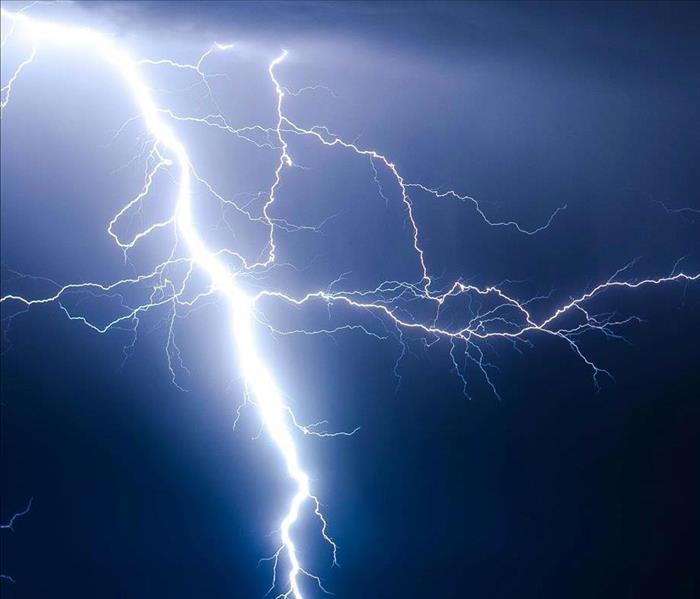 lightning safety for your business
lightning safety for your business
Lightning strikes are a powerful and unpredictable natural phenomenon that can cause significant damage to businesses. Protecting your business from lightning strikes involves taking proactive measures to minimize risks and ensure the safety of your property and employees. Here are five essential safety tips:
1. Install a Lightning Protection System
A lightning protection system (LPS) is designed to direct the energy from a lightning strike safely to the ground, preventing it from passing through your building. Key components of an LPS include:
- Air Terminals: Rods installed at the highest points of your building to attract lightning.
- Down Conductors: Cables that carry the electrical current from the air terminals to the ground.
- Grounding System: Metal rods buried in the ground to safely dissipate the electrical current.
2. Surge Protection Devices (SPDs)
Surge protection devices are essential for protecting your electrical and electronic equipment from voltage spikes caused by lightning. Install SPDs at key points in your electrical system, such as:
- Main Service Panels: To protect the entire electrical system.
- Sub-Panels: To provide localized protection.
- Individual Outlets: To safeguard sensitive equipment like computers and communication devices.
3. Regular Maintenance and Inspections
Conduct regular maintenance and inspections of your lightning protection system and electrical infrastructure. This includes:
- Annual Inspections: Check for any wear and tear or damage to the LPS components.
- Routine Electrical Checks: Ensure all surge protectors and grounding systems are functioning correctly.
- Compliance with Standards: Make sure your lightning protection system complies with relevant safety standards and codes.
4. Employee Training and Emergency Preparedness
Educate your employees on lightning safety protocols and emergency procedures. Key points to cover include:
- Shelter Protocols: Instruct employees to seek shelter indoors and avoid using electrical equipment during a storm.
- Emergency Response: Develop and practice an emergency response plan in case of a lightning strike.
- First Aid Training: Provide basic first aid training for handling injuries related to lightning strikes.
5. Structural and Environmental Precautions
Take additional steps to safeguard your building and surrounding environment. Consider:
- Lightning Rods and Conductors: Install these on outdoor structures such as fences, trees, and signage to prevent side flashes.
- Avoid Tall Structures: Avoid placing tall structures or equipment that can attract lightning near your building.
- Tree Maintenance: Trim or remove trees that could fall and cause damage if struck by lightning.
Implementing these essential safety tips can help protect your business from the devastating effects of lightning strikes. For professional assistance, consult with SERVPRO of Southern York County and ensure your business is well-prepared for this unpredictable natural threat.
Uncovering Hidden Fire Hazards in Your Commercial Property: Prevention Tips for Safety and Peace of Mind
7/8/2024 (Permalink)
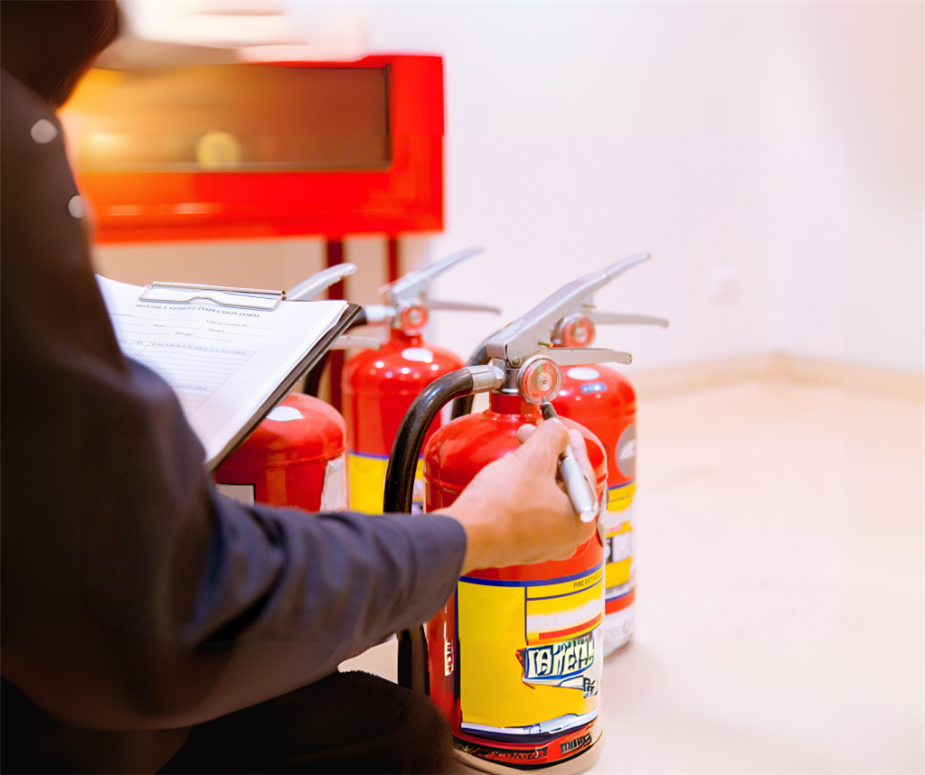 make sure your safety equipment is checked on a regular basis
make sure your safety equipment is checked on a regular basis
Fire safety is a top priority for any business owner, but often, hidden fire hazards can go unnoticed until it's too late. As part of your proactive safety measures, it’s crucial to identify and address these lesser-known risks to protect your property, employees, and clients. Here are some common but often overlooked fire hazards and tips on how to mitigate them:
1. Electrical Outlets and Power Strips
Hazard: Overloaded outlets and power strips are a significant fire risk in commercial settings, especially with the extensive use of electronic devices.
Prevention Tips:
- Regularly inspect all electrical outlets and power strips for signs of wear and tear.
- Avoid daisy-chaining power strips and ensure they are not overloaded.
- Hire a licensed electrician to check your building’s electrical system and ensure it meets current safety standards.
2. Dust and Debris in Hidden Areas
Hazard: Dust accumulation, particularly in areas like ducts, vents, and behind machinery, can be highly flammable.
Prevention Tips:
- Implement a regular cleaning schedule for hard-to-reach areas.
- Use industrial-grade vacuum cleaners designed to handle fine dust particles.
- Regularly service HVAC systems to prevent dust buildup.
3. Storage Areas and Closets
Hazard: Improper storage of flammable materials and cluttered storage areas can easily become ignition points.
Prevention Tips:
- Store flammable materials in designated, well-ventilated areas with appropriate safety measures in place.
- Maintain clear, organized storage spaces to ensure materials are not placed near heat sources or electrical outlets.
- Conduct periodic audits of storage areas to identify and mitigate potential hazards.
4. Kitchen Equipment
Hazard: Commercial kitchens are high-risk areas due to the presence of cooking equipment and flammable oils and greases.
Prevention Tips:
- Regularly clean kitchen appliances, including ovens, stoves, and fryers, to prevent grease buildup.
- Ensure all kitchen staff are trained in fire safety protocols, including the proper use of fire extinguishers.
- Install and maintain automatic fire suppression systems in the kitchen area.
5. Outdated Fire Safety Equipment
Hazard: Fire extinguishers, smoke detectors, and sprinkler systems that are outdated or improperly maintained can fail during an emergency.
Prevention Tips:
- Schedule routine inspections and maintenance of all fire safety equipment.
- Replace fire extinguishers and smoke detector batteries according to manufacturer guidelines.
- Ensure your fire sprinkler system is inspected and tested by certified professionals regularly.
6. Faulty or Misused Electrical Equipment
Hazard: Electrical equipment that is old, damaged, or misused can overheat and cause fires.
Prevention Tips:
- Inspect and replace damaged electrical cords and equipment promptly.
- Train employees on the correct use of electrical equipment and the importance of unplugging devices when not in use.
- Implement a policy for reporting and addressing electrical equipment issues immediately.
7. Neglected Heating Systems
Hazard: Heating systems, especially those that are infrequently used or poorly maintained, can pose significant fire risks.
Prevention Tips:
- Conduct regular maintenance checks on all heating systems, including boilers, furnaces, and space heaters.
- Keep heating equipment away from combustible materials.
- Ensure proper ventilation around heating units to prevent overheating.
........
By recognizing and addressing these lesser-known fire hazards, you can significantly reduce the risk of fire in your commercial property. Regular inspections, proper maintenance, and employee training are key components of a comprehensive fire prevention strategy. For professional assistance and more information on keeping your business safe from fire hazards, contact SERVPRO of Southern York County today. Our experts are here to help you with all your fire safety needs, from risk assessment to emergency response and restoration.
Contact SERVPRO of Southern York County today to schedule a fire safety assessment and protect your business from potential fire hazards.
7 Crucial Steps you Need to Know for Cleaning Water-Damaged Drywall
7/1/2024 (Permalink)
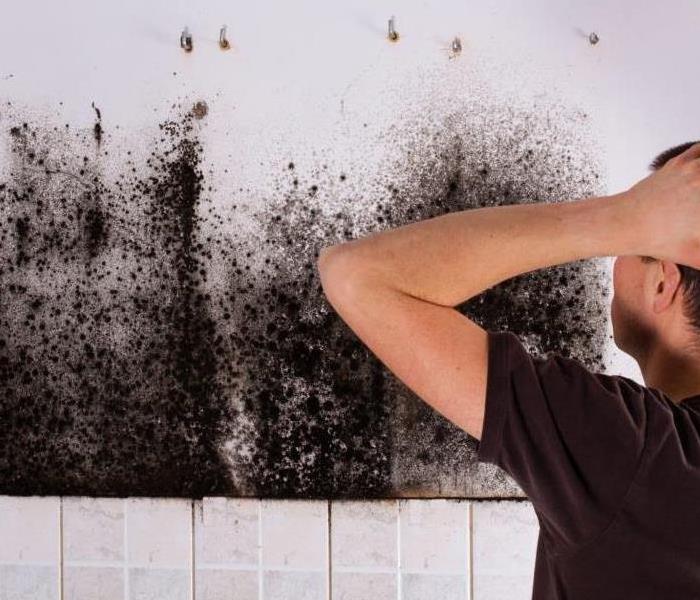 black mold after 24 hours
black mold after 24 hours
1. **Assessment and Safety**: Immediately assess the water damage and ensure safety by cutting off electricity. Wear protective gear to avoid health hazards.
2. **Identify the Source of Water**: Quickly determine if the water is clean, grey, or black as it affects the cleaning approach and safety precautions.
3. **Drying the Area**: Speedily dry the affected area using fans, dehumidifiers, and open windows to prevent mold growth.
4. **Inspect for Mold**: Check for mold as it can develop within 24-48 hours and poses serious health risks if not addressed promptly.
5. **Remove Damaged Drywall**: Cut and remove severely damaged or mold-infested drywall at least 12 inches above the waterline.
6. **Cleaning and Disinfecting**: Thoroughly clean the remaining drywall with a mild detergent and disinfect the area to kill any remaining bacteria or mold spores.
7. **Repair and Restore**: Once the area is dry and cleaned, replace the removed drywall sections and finish the surface with appropriate materials.
Following these steps is crucial to ensure that water-damaged drywall is properly cleaned and restored, minimizing health risks and structural damage.
Burst Pipes and Homeowner Preparedness: Why SERVPRO Southern York County is Your Best Choice
6/21/2024 (Permalink)
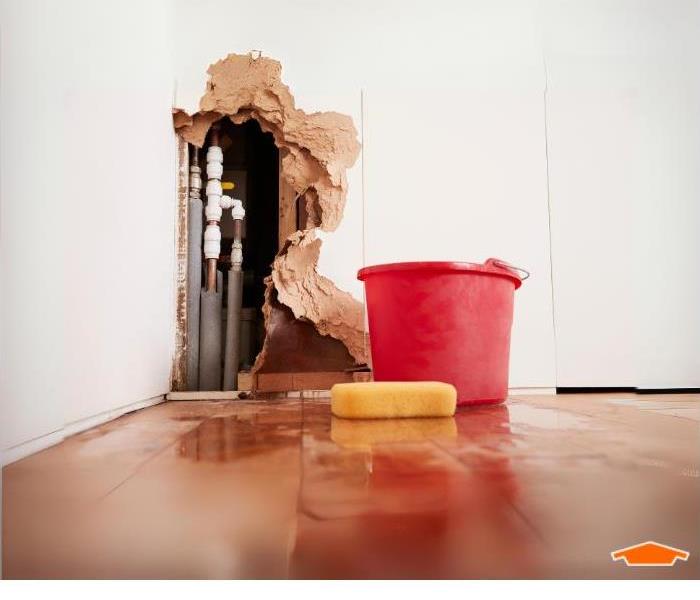 burst kitchen pipe
burst kitchen pipe
Understanding the Threat of Burst Pipes
Burst pipes are a homeowner's nightmare, often leading to significant damage, costly repairs, and a lengthy recovery process. This issue can occur for various reasons, including freezing temperatures, old and corroded pipes, excessive water pressure, or a sudden impact on the plumbing system. Regardless of the cause, the aftermath can be devastating, with water damage affecting walls, floors, furniture, and even the structural integrity of your home.
The Importance of Preparedness
Preparedness is key to mitigating the damage caused by burst pipes. Here are several steps homeowners can take to prepare and protect their homes:
1. Insulate Pipes: Use pipe insulation or heat tape to protect pipes in unheated areas such as basements, attics, and garages.
2. Seal Cracks and Openings: Ensure there are no cracks or openings around doors, windows, and foundation to keep cold air from reaching the pipes.
3. Maintain a Consistent Temperature: Keep your home at a consistent temperature, even when you're away, to prevent pipes from freezing.
4. Know Your Water Main: Be aware of where your water main is located and how to shut it off in case of an emergency.
5. Regular Maintenance: Schedule regular plumbing inspections to identify and address potential issues before they escalate.
Immediate Actions When a Pipe Bursts
If a pipe bursts in your home, immediate action is crucial to minimize damage:
1. Shut Off the Water: Quickly turn off the main water supply to prevent further flooding.
2. Turn Off the Electricity: If water is near electrical outlets or appliances, turn off the electricity to avoid hazards.
3. Remove Valuables: Move furniture, electronics, and other valuables to a dry area.
4. Contact a Professional: Call a professional water damage restoration service like SERVPRO Southern York County to handle the cleanup and repairs.
Why Choose Us for Burst Pipe Emergencies?
When disaster strikes, you need a reliable and efficient response. Here’s why we are the best choice for handling burst pipe emergencies:
1. 24/7 Emergency Service: Round-the-clock emergency services, ensuring they can respond quickly to your call and begin the restoration process immediately.
2. Expert Technicians: Our team of highly trained technicians has the expertise and equipment necessary to handle water damage restoration efficiently and effectively.
3. Comprehensive Services: From water extraction and drying to repair and restoration, we provide comprehensive services to restore your home to its pre-damage condition.
4. Advanced Technology: We use state-of-the-art equipment and techniques to ensure thorough drying and dehumidification, preventing mold growth and secondary damage.
5. Insurance Coordination: We work closely with insurance companies to streamline the claims process, providing documentation and support to help you navigate the complexities of insurance claims.
Preventative Measures and Ongoing Support
Beyond immediate response and restoration, SERVPRO Southern York County offers preventive services and ongoing support to help you safeguard your home against future water damage:
1. Water Damage Assessment: Regular assessments can identify potential vulnerabilities in your plumbing system, allowing for proactive repairs.
2. Education and Training: We educate homeowners on best practices for maintaining their plumbing systems and preventing water damage.
In The End
Burst pipes can cause significant disruption and damage to your home, but with proper preparedness and the right professional help, you can minimize the impact. Our prompt response, expertise, and comprehensive services make us the ideal partner for homeowners facing water damage emergencies. By choosing us, you’re not only opting for immediate relief but also investing in long-term protection for your home. Don’t wait for disaster to strike—be prepared, stay informed, and trust SERVPRO Southern York County to keep your home safe and sound.
Spring into Action: Protecting Your Home Inside and Out with Essential Cleaning Practices
4/22/2024 (Permalink)
As we say goodbye to winter and spring knocks on our doors, it's time to prepare our homes for a season of growth and renewal! Spring cleaning presents an opportunity to fortify our homes against the wear and tear of the past months. From safeguarding against moisture damage to enhancing curb appeal, let's dive into some essential spring cleaning tasks that can protect both the interior and exterior of your home.
Seal Cracks and Gaps: Inspect the exterior of your home for cracks and gaps where moisture can seep in. Use caulking or weather-stripping to seal any openings around windows, doors, and foundation walls. By preventing water intrusion, you can safeguard against costly water damage and mold growth, preserving the structural integrity of your home.
Clean Gutters and Downspouts: Clogged gutters and downspouts can lead to water pooling around your home's foundation, increasing the risk of basement flooding and structural damage. Clear out debris such as leaves, twigs, and dirt from gutters and downspouts to ensure proper drainage. Consider installing gutter guards to minimize maintenance and prevent future blockages.
Trim Trees and Shrubs: Overgrown trees and shrubs can pose a threat to your home's exterior, especially during spring storms with high winds. Trim back branches that are touching or hanging over your roof, siding, or windows to prevent damage from falling limbs.
By addressing both the interior and exterior of your home, you can protect against moisture damage, improve energy efficiency, and enhance the longevity of your property.




 24/7 Emergency Service
24/7 Emergency Service









